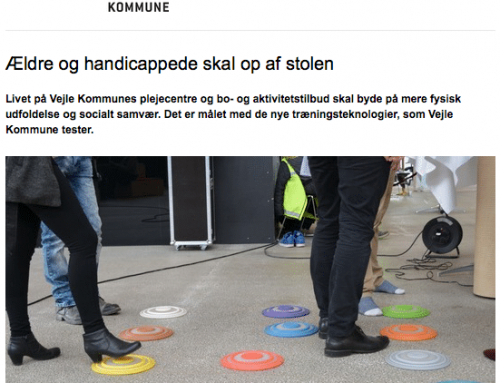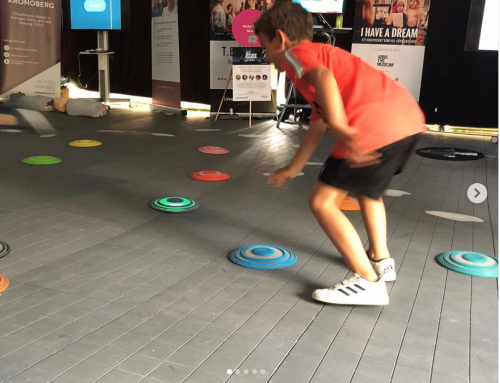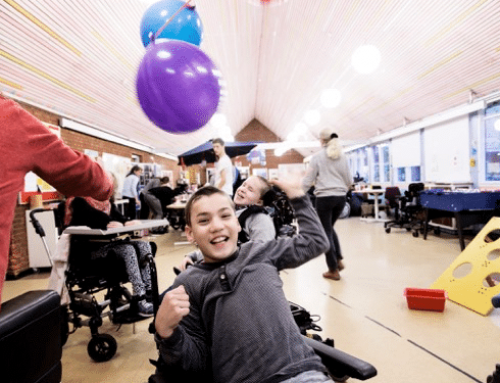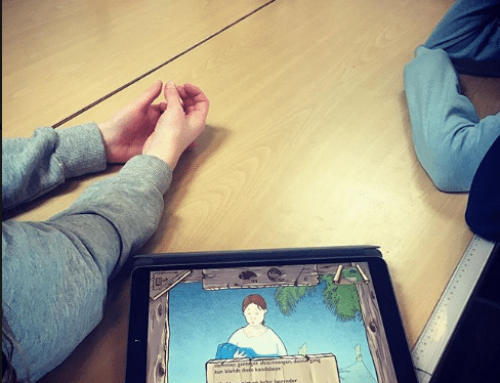Practice working memory… with Hopspots
By Trine Askjær-Jørgensen
Hopspots is standing in the middle of the classroom with the 12 colorful spots spread all over the floor because now it’s time for the pupils to move while learning. The teacher, Monica, started a game of Sequence. William is next in line to remember the sequence. He starts with the yellow spot next to the speaker stand, then the turquoise, lying far away next to the blackboard, purple… and then… William hesitates… was it the black or the brown spot that was next? His classmates yell “Brown, brown! Brown’s next”, trying to help him because if he makes a wrong step the game starts over. William steps on the brown spot, which gives out a loud fart and makes all the children laugh. Now it’s his turn to add a new spot to the sequence. He picks the green one, and Flora is up next.
The children benefit from playing Sequence because they have to remember an order, which they make longer and longer together. Here the pupils can help each other out if some are having a harder time than others remembering the order – in that way the game is very inclusive. The children practice their working memory using their body and senses cause in Sequence you can use both the movement, but also the individual sounds and colors of the spots to remember the order. The game was originally developed for children with ADHD and autism, but we can all benefit from practicing our working memories.
“The better the working memory, the better the ability to learn. That is the clear-cut conclusion from brain researchers from both at home and abroad. And the good news are that working memory can be practiced so that also pupils with ADHD can advance greatly in terms of learning”, Lise Frank writes at folkeskolen.dk (in Danish). You use the working memory when remembering parts of the task you are currently carrying out. Thus, working memory is located right between short-term- and long-term memory and can hold information for seconds, minutes or hours depending on how long you are “working” with the information (Krogh 2012, 2-3). Working memory is according to Fredens, the process that occurs when we reflect, revise, immerse ourselves in something and ask questions (169). Therefore, it is also our working memories that connect previous experiences and knowledge with a current situation – something that you are constantly using when solving different tasks (Krogh 2012, 2). Thus, working memory is the link between perception and action, and is involved in planning, impact assessments and the solving of complex problems. It holds onto the information you need in order to solve a problem or reach a goal (Krogh 2012, 5).
Why practice working memory?
Because it is essential to learning. As Krogh writes: “When children go to school they are presented with a lot of different topics and tasks, and there is so much that they have to remember. The memory system is therefore important to learning… There are several types of memory that collaborate when we learn” (Krogh 2012, 2), but the working memory is important because it makes sure that there is room in the brain for combining thoughts, that a person can keep track of all the different parts of a task, whilst doing it, and that you can remember a question while searching for the answer (Levine 2004, 119). These are just some of the very important functions that the working memory manages. If it cannot hold information for very long or does not have space enough to solve tasks of a certain size, it can really affect learning. “In order for new knowledge to be stored, it is crucial that children’s working memories are activated” (Krogh 2012, 6). Luckily, working memory can be practiced so that abstract thinking and learning is improved (Krogh 2012, 5).
Working memory and the body
Working memory interacts with perception – information is constantly exchanged between the human and its surroundings. According to Kjeld Fredens, doctor and brain researcher, “we mustn’t forget that children’s cognition would much rather take place in their hands and feet than in their heads. The body, senses and actions are an integral part of working memory” (2013, 25). To children head and body aren’t separate entities – on the contrary children’s consciousness and knowledge is shaped by the experiences they get through their senses and body, which subsequently affects their cognition. “They practically understand and remember with their bodies”, Fredens says (2012, 14). That’s why it so essential that children get to use their bodies when learning and improving their working memories, which they need to in order to develop the capacity of it and thereby their own capability.
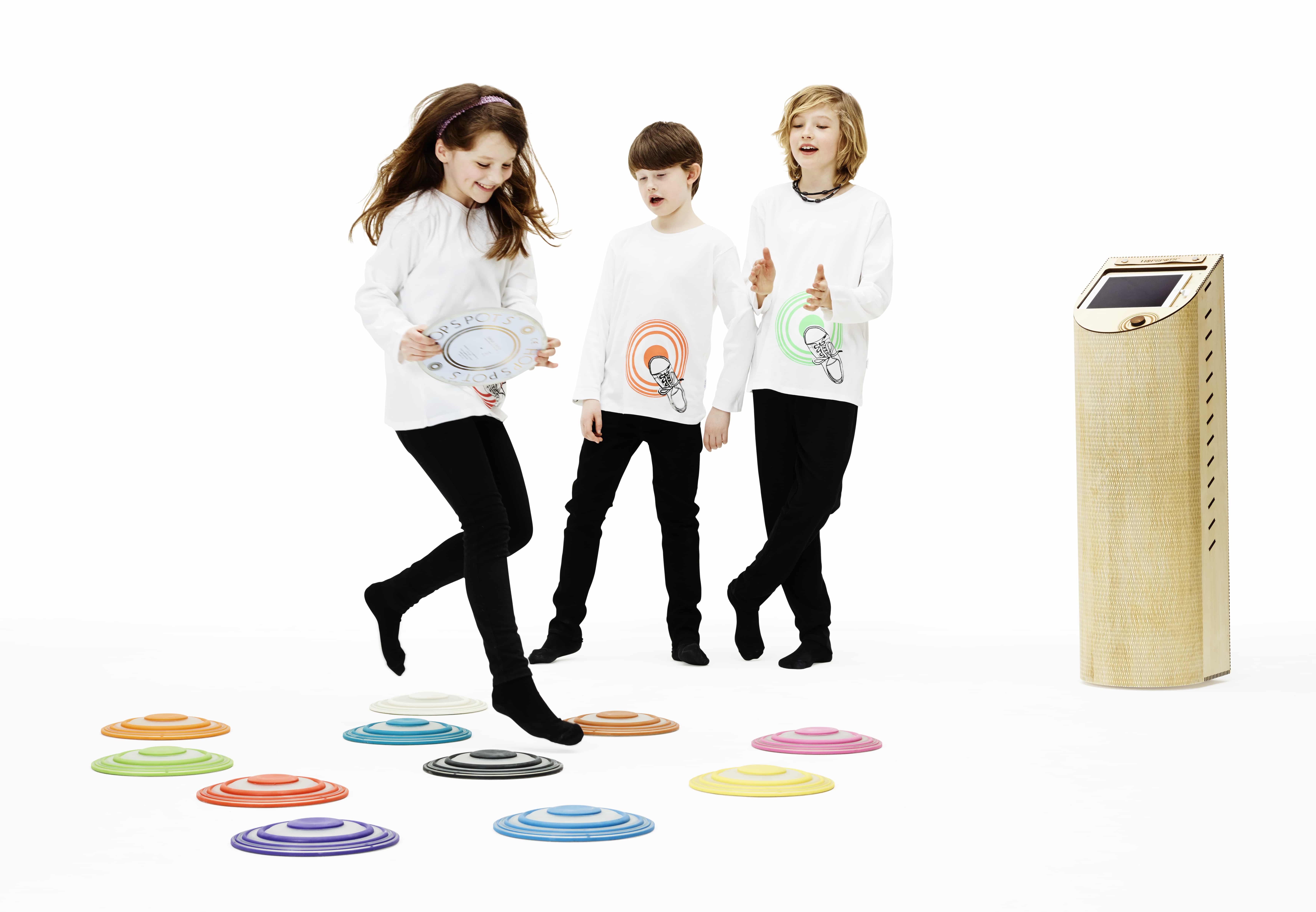
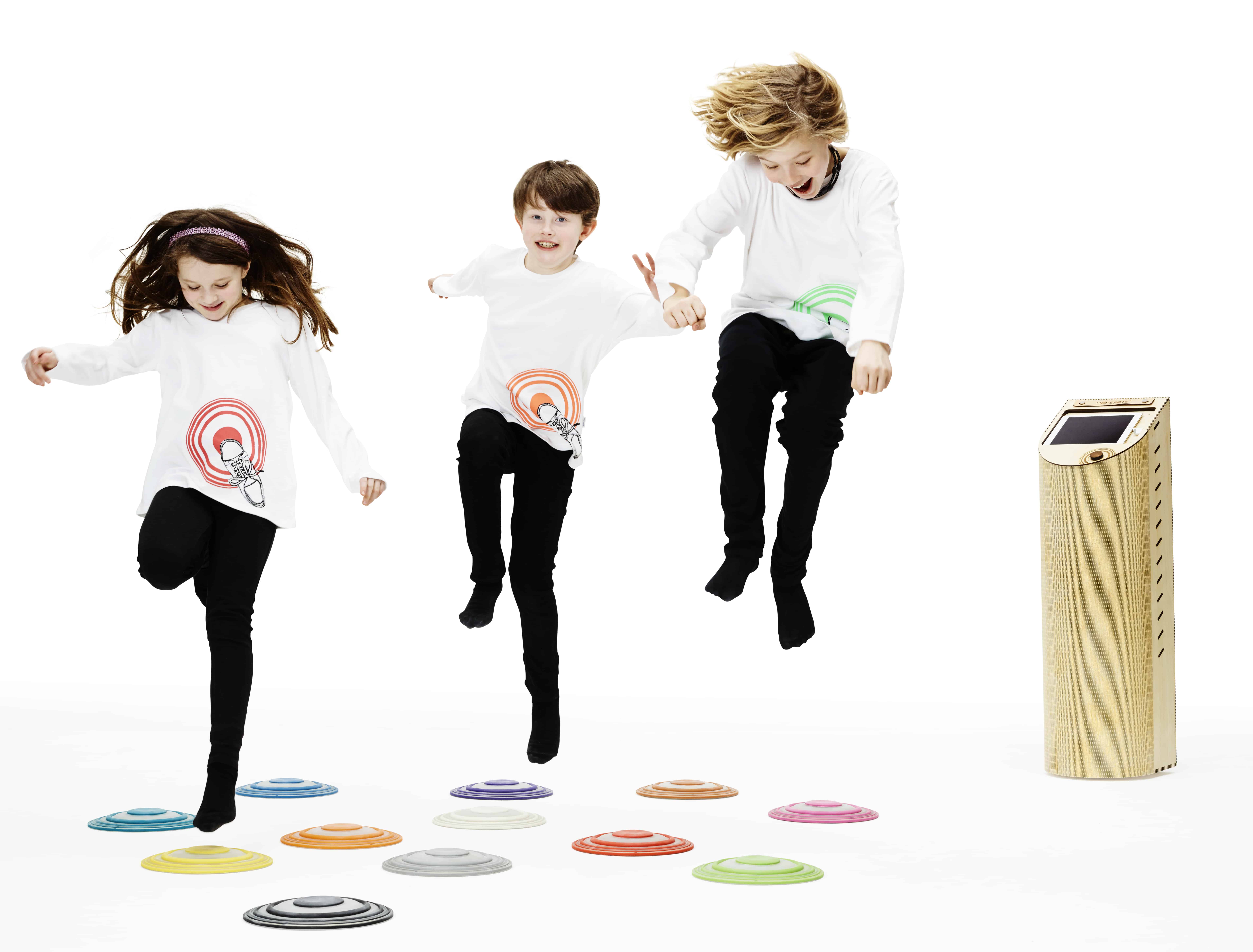
Hopspots and working memory
As an interactive learning tool designed to connect movement with learning, Hopspots is a great and effective way of practicing working memory, because you use the surroundings and perception of it as well as the action you are carrying out with your body. With Hopspots you use both your senses to perceive the learning tool’s sound and light as well as movement to actively learn via your body. Doctor and brain researcher, Kjeld Fredens, underlines that skills such as “being able to keep several balls in the air at once and thinking ahead” really improve working memory (Frank 2011). He furthermore recommends that you use different types of learning, approach learning in a playful way, because play inspires, and that you use tools e.g. writing things down, recording, making pictures etc. (2013, 27).
Especially the part about keeping several balls in the air, thinking ahead, combining play and learning and recording are all possible with Hopspots. Additionally, you can also practice orders, something that the working memory can really benefit from, you can revise, reflect, and understand that an action entails several parts, and not least you can learn at the speed that suits you. All these things Krogh points out as good ways of practicing working memory (2012, 8-10), and they are possible with Hopspots. Specifically, the games Sequence, Mix’n’Match and Code a Spot are great for this – the later in which you can programme your own learning content.
Learn more about Sequence and all our other games here.
Sources:
Bache, Signe. 2012. Læring i bevægelse. Nyborg: Dansk Skoleidræt
Fredens, Kjeld. 2012. Mennesket i Hjernen, Hans Reitzels Forlag.
Fredens, Kjeld. 2013. ”De små hoveder vokser”. Skolestart. Årg. 43, nr. 6.
Krogh, Helle Wium. 2012. ”Arbejdshukommelse – Arbejdshukommelse og Læring”, PPR Skive Kommune: https://www.skive.dk/media/2456/779_2012_247296_arbejdshukommelse___folder.pdf
Frank, Lise, 2011. ”Lærere kan lære af ny hjerneforskning”. Folkeskolen: https://www.folkeskolen.dk/504917/laerere-kan-laere-af-ny-hjerneforskning
Levine, Mel. 2004. Hjernen bag lysten til at lære – Neuropædagogik i teori og praksis, Dansk Psykologisk Forlag.
About the author: Trine Askjær-Jørgensen
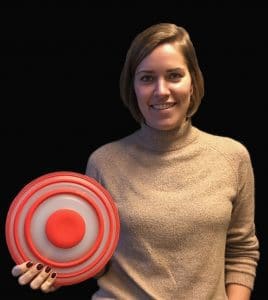
As a Master of Arts in English Trine excells in English and has a lot of knowledge about cognition, language acquistion etc. Her job at Hopspots consists of translating, proofreading as well as writing content for both our English and Danish websites, Facebook and so on.


